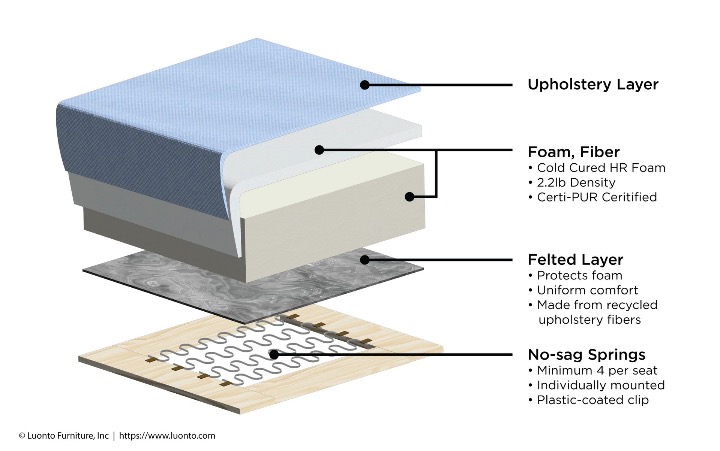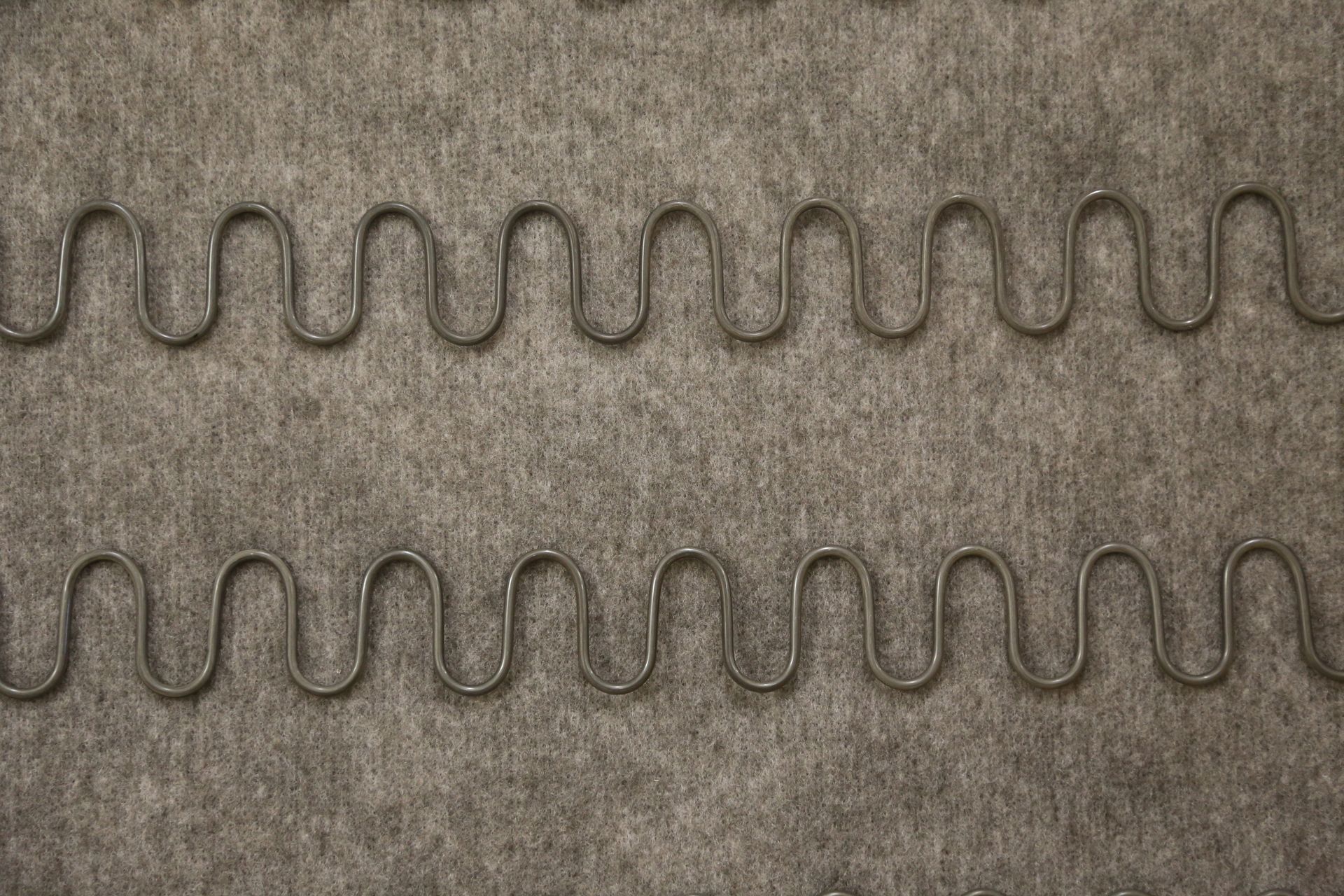What are no-sag springs?
No-sag springs, also known as sinuous springs or serpentine springs, are a type of spring system commonly used in upholstery and furniture construction. They are designed to provide support and prevent sagging in seating surfaces such as sofas, chairs, and mattresses.
The springs are usually installed along the seat or back of a piece of furniture. They are attached to the frame with clips or fasteners, creating a network of springs that distribute weight evenly and offer consistent support across the seating area.
No-sag springs are often combined with other cushioning materials such as foam or padding to enhance comfort and provide additional support. The combination of these components creates a balanced seating surface that resists sagging and maintains its structural integrity.

Comparison to traditional springs or webbing?
Coil springs, also known as pocketed springs or innerspring systems, have been widely used in furniture construction for many years. No-sag springs, offer a more consistent support across the seating area.
Webbing suspensions another traditional seat support system commonly found in furniture. They consist of elastic or non-elastic webbing straps that are woven or stretched across the seat frame. No-sag springs generally provide better support than webbing suspensions. Webbing tends to have more give and elasticity, which can result in a softer, less firm seating experience. No-sag springs offer firmer support and help prevent excessive sagging.
What are the benefits of this kind of seat suspension?
No-sag springs consist of a series of S-shaped metal wires or coils that are interconnected horizontally. These springs are typically made from high-tensile steel wire, which gives them the strength and resilience required for supporting weight and maintaining their shape over time.
One of the advantages of no-sag springs is their durability. They can withstand repeated use and heavy weight without losing their shape or becoming permanently compressed. This ensures that the furniture retains its comfort and support over an extended period.
How does the Luonto Quality Standard apply to this?
Quality is the cornerstone of the business, permeating all processes from design to delivery, with rigorous testing at each stage. During the assembly of seat suspension, each spring is individually attached with plastic coated metal clips, which are first stapled into place, then stapled closed securing the spring-end.
Our staples use heat-activated adhesive that activates from the friction of the installation resulting in a bond that is meant to last. Every spring is evenly spaced with a minimum of 4 per seat, always spaced 4.25 inches on center, maintaining uniform and expected comfort over the entire seat.
To enhance the seat's durability and lifespan, we incorporate an interfacing layer between the springs and the seat foam. This layer utilizes recycled upholstery fibers to create a felt material. Its purpose is to safeguard the seat foam from potential deformation or harm that could occur if the interfacing felt layer were not present, such as the springs cutting into the foam.
Overall, no-sag springs are a popular choice in furniture manufacturing due to their reliable support, longevity, and ability to prevent the sagging that can occur with time and use.



